Loan collection materials
Policies for borrowing materials from the Biological Museum
The collections of the Biological Museum in Lund are available for researchers from throughout the world for research purposes. We also lend material for exhibitions and education.
Botanical collections
General
Loans are normally only made to recognised herbaria and institutions with a permanent state listed in Index Herbarioum. However, loan requests are dealt with on a case-to-case basis. The responsibility for safe-keeping and return of the loans falls upon the borrowing institution. Students or researchers not in permanent employment will only receive loans in the name of their supervisors.
Consider first if digital images are sufficient instead of the actual material. Digital images of mainly type material are available at Sweden's Virtual Herbarium (external website). Other specimens or close-ups may be photographed upon request. In the case of major investigations, researchers are encouraged to visit the herbarium to assess the collections at the beginning of the project.
The formal loan requests should be made by the head of the institution or a curator to the Director of LD; Associated Professor Ulf Arup either by email Ulf [dot] Arup [at] biol [dot] lu [dot] se or by regular mail:
Botanical Museum
Box 117
SE-221 00 Lund
Sweden
Phone; +46 46 222 89 66
Loan requests should state the name of the workers on whose behalf they are made and as detailed information as possible of the taxonomic, nomenclatural and geographic scope of the intended work. A brief description of the intended use of the material, for example, research, flora work etcetera should be included. If type material is requested, provide basionym and original publication. For loans from the Agardh herbarium, also provide Agardh number if known. If applicable, an outline of any commercial arrangements bearing upon the use of the material shall also be included.
The normal loan period is 12 months, except for type material which is either 3 or 6 months. An extension may be granted upon written request. Loans should preferably be returned in their entirety, but partial returns are accepted.
Use of loan or exchange specimens in projects of a commercial nature requires separate and specific permission. "Commercial purposes" do not include the sale of research-derived publications that are in the public domain. It does include the sale, transfer, or transmission (other than for public domain research), of unpublished information (for example lists or databases of specimen or taxon attributes) or images, to third parties.
Storage and use
Loans must be stored under secure, protective conditions. The specimens must be treated with care and be kept in suitable cabinets when not in use for safe-keeping from insects or other pests. Sheets or packets should not be bent, folded, or handled in any way likely to cause detriment to the specimens. Except during actual examination, specimens should remain in their original folders or packets. The original folders and packets must be returned with specimens.
No material may be removed from the borrowing institution or permanently from the specimen itself without prior written permission from LD. Transfer of a loan or part of a loan to another institution must be approved from LD in advance and the receiving institution must first sign a new receipt for the loan. Removal for investigation of small parts of specimens is normally permitted when the material is in sufficient quantity and it does not harm the future value of the material. Dissection of type material should not be made unless it is absolutely essential for the investigation. All dissected parts from these must be returned to LD. Dissection of type material from the Retzius-Acharius and the Agard herbaria should not be made unless it is absolutely essential for the investigation.
If material is to be sampled using invasive methods, for example, chemical or DNA analysis, written prior permission must be obtained from LD. In the case of DNA extractions, we will want to know:
- If the extraction was successful or not.
- If successful, we want to know the identity number of the extractions ("DNA number") and where these are kept.
- Which genes were successfully sequenced? Any DNA sequence data resulting from these samples should be deposited in GenBank (external website) or an equivalent repository of genetic information. To avoid unnecessarily repeated sampling of type material, specimens from the Retzius-Acharius and the Agardh herbaria, we also require copies of the original lab data from the sequencing lab, HPLC plots etcetera. The data will not be made public or released prematurely to other scientists.
Annotations and returns
Upon return, all borrowed specimens shall be annotated with separate signed and dated slips attached to the sheet (but not obscuring the original label), or in the case of specimens kept in envelopes, put inside the envelope, but never directly on the herbarium sheets. Annotations shall include information about if the identity or name of the organism has been verified or redetermined as well as all investigations (for example DNA analyses, chemical analyses, micromorphological and morphometric studies) which have been performed on the specimen. The latter may be in the form of references to publications or digital resources, identification numbers planned to be used in future publications or, at least, the name and affiliation of the researcher who may be contacted if questions arise.
Specimens that cannot be determined or are found to belong to a group not treated should be annotated to the extent possible. Where material on a sheet is found to represent two or more collections or taxa, each element should be indicated on the sheet and on the determination slip. When DNA analyses have been made, please notify LD of the GenBank accession numbers or equivalent, or if available before the return of the loan, add that information to the enclosed annotation labels "DNA voucher specimen". Mind the size of the annotation strips, they should not be unnecessarily large (maximum 70 x 25 mm/2.7 x 1")!
Specimens must be carefully and securely packed to avoid damage in transit; using the original packing materials is preferred. If types or material from the Retzius-Acharius or the Agardh herbaria is included, the shipment must be traceable, that is through through registered mail or as a package.
Herbarium LD must be acknowledged appropriately in any publications or other materials that present results derived from the use of the loan specimens.
A copy of any publications resulting from the study of loan or exchange material would be appreciated.
Biological Museum, Lund University
Herbarium
Box 117
221 00 Lund
Sweden
For parcels from abroad
Porfyrvägen 20
224 78 Lund
Sweden

Ulf Arup
Email: Ulf [dot] Arup [at] biol [dot] lu [dot] se
Telephone: +46 46 222 89 66
Entomological collections
Each insect group has its own contact person.
General
One loan receipt should be signed and returned by the borrower immediately on receipt of the specimens by regular mail or as a scanned copy via e-mail.
Each specimen should be labelled with an entomological collections (MZLU) individual number (provided in the package) and the label data should be recorded in the Excel file that was sent to the borrower by e-mail.
Storage and use
All specimens must be treated with care and stored in suitable environmental conditions when not in use. In particular, stringent measures must be taken to prevent infestation by insects or other pests. Specimens sent out in a liquid preservative must be maintained in the same medium and not allowed to dry out. Specimens should be stored in total darkness.
Written permission must be obtained before any specimen is dissected or altered in any way, including sampling for chemical or DNA analysis. Parts removed from a specimen (genitalia etcetera) must be fully documented and must be returned at the same time as the specimen.
Original labels are not to be removed or altered. Changes in the nomenclature should be indicated on a separate label. Every specimen identified by the borrower should have a determination label attached to it.
Material on loan must not be removed or transferred from the institution to which it is loaned or passed on to another worker unless and until written permission is obtained from the entomological collections (MZLU). The borrower agrees to inform entomological collections (MZLU) immediately of any change of address.
Returns
The specimens on loan are to be returned by the date specified. Extensions to the loan period may be negotiated with the curator at least 2 weeks before the return date. Loans of primary type specimens may be extended for up to six months from the time of the initial loan and loans of non-type material may be extended annually for up to five years.
Borrowed specimens remain the property of entomological collections (MZLU). The Museum may allow the borrower to retain a small portion of specimens in recognition of work done in identifying the material, but ALL specimens must be returned to entomological collections (MZLU) in the first instance (with a note of those the borrower wishes to retain).
When returning specimens the borrower is requested to ensure that they are packed in such a way as to protect them fully against the risk of damage during transit. The borrower is responsible for the costs of material being returned. Type material must be returned using registered mail.
The borrower should acknowledge entomological collections (MZLU) for a loan of specimens in any papers resulting from the studies of the borrowed material, and a reprint, or a pdf of the paper, should be sent to entomological collections (MZLU). The preferred acronym for use in publications is MZLU.
Biological Museum, Lund University
Entomology
Ecology Building
Naturvetarvägen 6A
223 62 Lund
Sweden
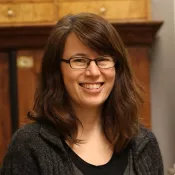
Jadranka Rota
Email: Jadranka [dot] Rota [at] biol [dot] lu [dot] se
Telephone: +46 46 222 84 57

Rune Bygebjerg
Email: Rune [dot] Bygebjerg [at] biol [dot] lu [dot] se
Telephone: +46 46 222 93 30
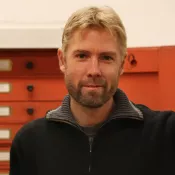
Christoffer Fägerström
Email: Christoffer [dot] Fagerstrom [at] biol [dot] lu [dot] se
Telephone: +46 46 222 84 56
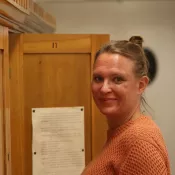
Ellen Sandström
Email: Ellen [dot] Sandstrom [at] biol [dot] lu [dot] se
Telephone: +46 46 222 95 58
Zoological collections
The collections of the Biological Museum in Lund are available for researchers from throughout the world for research purposes. While every effort will be made to accommodate the needs of researchers, decisions concerning loans and destructive use will be made on a case-by-case basis by curatorial staff.
Conditions
General loans are only granted to researchers at scientific institutions, not to private researchers. Loaning institutions must have adequate storage facilities so that the safekeeping of the material is guaranteed. For example, loans must be stored so that they are not physically, chemically or biologically damaged; material preserved in liquid must not be allowed to dry out, and must not be placed in ethanol denatured with methanol or any other destructive substance. In addition, loaning institutions must have proper routines for packing and return of the loans; it is required that loans are securely packed to prevent damage when the material is returned. Institutions that cannot meet these requirements, as well as researchers lacking institutional affiliation, need to ask an appropriate institution to request the loan on their behalf, and the loan must remain in that institution at all times. Students can only receive loans through their supervisor(s), who will assume formal responsibility for the specimens.
Grants of loans depend on the general availability of the requested taxon/taxa. Type specimens, human specimens and other unique historical collections are subject to more restrictive loan conditions, and researchers are instead encouraged to visit the zoological collections (MZLU) to study these.
The normal loan period is 12 months (6 months for type material), but an extension may be granted upon written request, to a maximum of two years and a maximum of one year for type material.
Specimens (or parts, extract, or product thereof) may not be transferred to a third party without prior written permission from a curator at the zoological collections (MZLU).
No commercial use shall be made of, nor licence or patent applied for on the material from the zoological collections (MZLU) (including information or data derived from this material, that is photographs) without written permission from the museum curator at the zoological collection. For researchers in non-European Union countries, a CITES institutional permit is required to receive material of CITES-listed Appendix I, II or III taxa.
DNA data from specimens at the zoological collections (MZLU) must be made publicly available, at GenBank, and accession numbers should be reported to a zoological curator at the zoological collections (MZLU).
The zoological collections (MZLU) should be acknowledged in all publications, with a list of voucher/sample numbers, in relevant cases correlated to GenBank/EMBL accession numbers.
Reprints of any publications resulting from the study of material obtained from the zoological collections (MZLU) are greatly appreciated; if new taxa are described based on specimens at the zoological collections (MZLU), reprints are required.
Destructive sampling/use
No invasive or destructive use or sampling whatsoever is allowed without prior written permission. This includes, but is not restricted to, grinding and sectioning of fossil material, dissection, coating for Scanning Electron Microscopy (SEM), preparation and sectioning for Transmission Electron Microscopy (TEM), dyeing, removal of material for chemical or DNA analysis, and remounting of fixed specimens. Samples for chemical- and DNA analysis will be taken by the curatorial staff of the zoological collections (MZLU) unless otherwise agreed on in writing. Sampling shall not be permitted if there is reason to believe that the data sought cannot be obtained from the specimen (that is, the technique is not sufficiently well known to consistently produce satisfactory results), or the specimen is known to be unsuitable for sampling (like old, or treated with heat or chemicals harmful to DNA sampling). In case invasive or destructive use/sampling is permitted, prepared, sectioned or coated specimens are to be returned. Any detached material is to be placed in a suitable packet with a slip bearing the taxon’s name and the zoological collections (MZLU) specimen number.
Each sampled specimen must be annotated, indicating the type of material removed, the date of removal, the name and institutional affiliation of the person who removed the sample, the type of the study, and the identification of the specimen accepted by the researcher. These annotations should be written in a separate document, not on the original labels/sheets. Reliable clarification or enhancement of the data with a specimen is gratefully received, especially where identification, locality, date, collector, collector’s number or type status are concerned. However, no alterations to the labels are allowed. Annotations should be made and attached on new slips. Unused material supplied for DNA or chemical analyses must be returned. The zoological collections (MZLU) reserves the right to request extracted DNA obtained from specimens owned by the zoological collections (MZLU). If serious damage has occurred to any specimen, the zoological collections (MZLU) must be notified immediately; attempts to repair or clean specimens are not allowed.
Request
A request for material, by ordinary mail or email, should include the following information, and be sent to a relevant curator at the zoological collections (MZLU).
- A brief outline of the research proposed.
- Names and affiliation of investigators involved. Students and PhD students are required to submit a letter co-signed by their supervisor(s), or ask their supervisor(s) to request the loan on their behalf.
- A list of the requested material.
- For DNA samples, the amount required, and the preferred preservation method for shipment.
- A statement that the applicant accepts all of the conditions in this document.
Contact details for the museum curator at the zoological collection
Postal address: Maria Mostadius
Box 117, 22100 Lund, Sweden
E-mail: maria [dot] mostadius [at] biol [dot] lu [dot] se
Delivery address: Arkivcentrum Syd, The Biological Museum
Att: Maria Mostadius
Porfyrvägen 20, 224 78 Lund, Sweden
Biological Museum, Lund University
Zoology
Box 117
221 00 Lund
For parcels from abroad
Porfyrvägen 20
224 78 Lund
Sweden
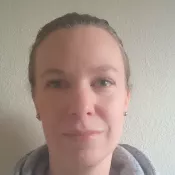
Maria Mostadius
Email: Maria [dot] Mostadius [at] biol [dot] lu [dot] se
Telephone: +46 46 222 45 41
Contact
Contact information for all personnel at the museum.
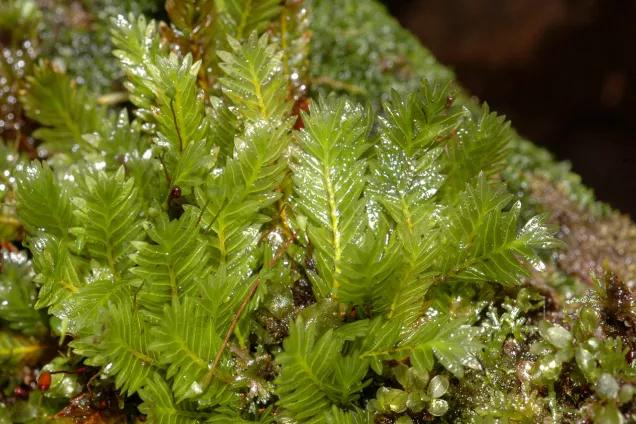
Search in our botanical collections
You can search in our collections (LD) through Sweden's Virtual Herbarium's database.

Search in our entomological collections
- The main collection (external database)
- Do you want to search among documents in our archive – please get in touch with us
- The entomological image bank (external database)

Search in our zoological collections
Instructions on how to search in our collections.

